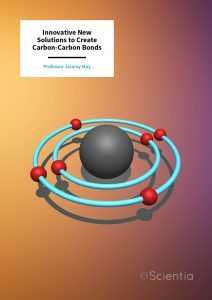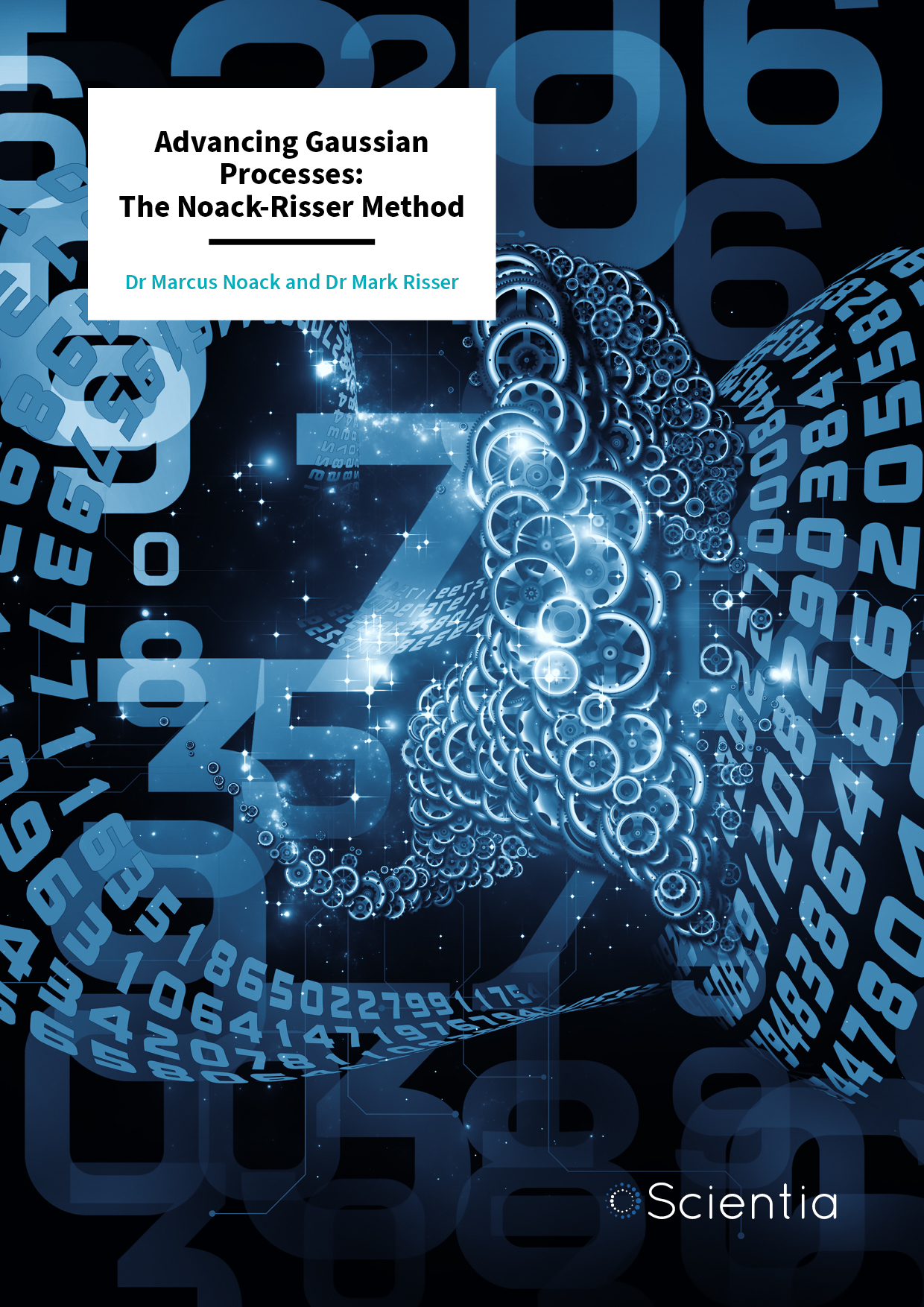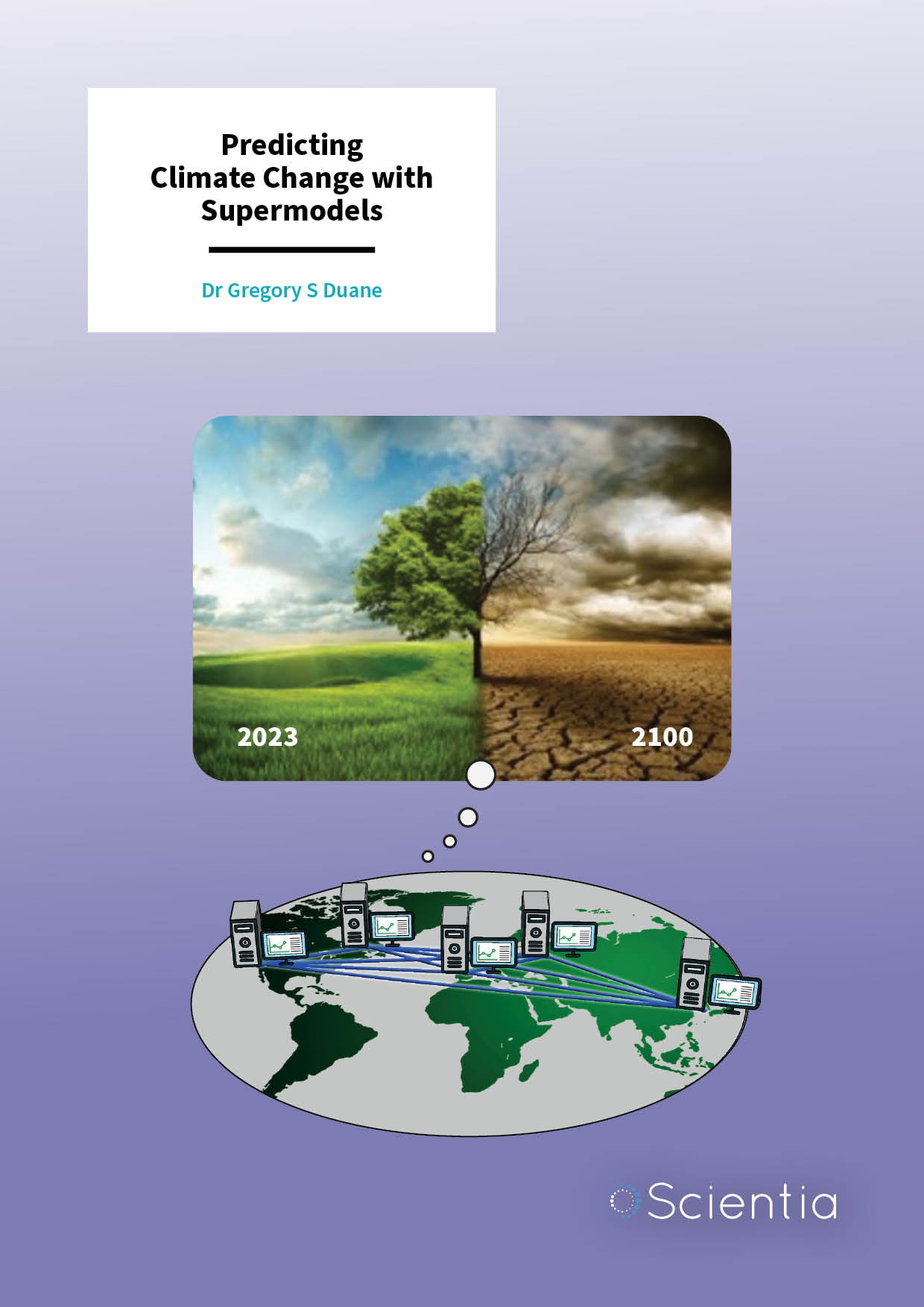Professor Jeremy May | Innovative New Solutions to Create Carbon-Carbon Bonds
One of the most fundamental chemical phenomena in existence is that of the carbon-carbon bond. It gives carbon atoms the ability to form the backbone of all organic chemistries; without it, life itself could not exist. Therefore, understanding how to make, break and manipulate this crucial bond is the secret to unlocking endless potential options for chemical synthesis. Professor Jeremy May and his team at the University of Houston, USA, have been developing methods to control the formation of these bonds, significantly furthering the field of organic synthesis.
The Importance of Carbon-Carbon Bonds
The entire field of organic chemistry revolves around the study and synthesis of chemical species, primarily made up of oxygen, hydrogen, nitrogen, and, most crucially, carbon. Carbon is a special element due to its ability to form multiple bonds, including bonds to other carbon atoms, which allows it to form the fundamental skeleton behind all organic compounds. Therefore, it is no exaggeration to say that the carbon-carbon bond is one of the most important in existence.
Not only is the ability to manipulate carbon-carbon bonds intellectually interesting, but it carries with it an untold number of practical uses. It has allowed scientists to recreate natural compounds in a laboratory environment and has revolutionised areas of pharmaceutical and medicinal development. In order to progress scientific fields, including the development of new drugs and medicines, as well as polymers and other synthetic materials, it is essential to understand how to best utilise these carbon-carbon bonds.
The difficulty comes in creating these bonds, especially in the ways we need them. It can be extremely difficult to ensure that only the correct bonds form, which is an issue when the final compound needs to have specific features, such as the chemical groups it includes, its size, shape and even symmetry. Therefore, when designing new molecules and altering existing ones, it comes down to the scientist to find a way to make it work in practice.
Professor Jeremy May, and his team at the University of Houston, have been tirelessly working in this field to understand the formation of carbon-carbon bonds and find more effective ways to control their synthesis. This research has the potential to transform the fields of organic, synthetic, biological and medicinal chemistry.

Gallium Catalysed Organic Reactions
When it comes to organic chemistry, a lot of emphasis is put on the use of suitable catalysts. These are additives which help to speed up reactions and, in some cases, can even influence the direction of the reaction and the end product it makes. This is especially true when it comes to developing quaternary carbons – carbon atoms which are bonded to four other carbon atoms. These exist in nature but are notoriously difficult to produce in the laboratory, due to the shape that these molecules take. The ‘arms’ of carbon spread out in four directions, making the molecules extra bulky and difficult to produce. This means any catalyst used to produce them needs to exhibit suitable reactivity in order to assist with the reaction. Therefore, it is important to be able to choose the right catalyst for the job.
Professor May and his team have been researching different catalysts based around the metal gallium, which is heavier relative to aluminium. Their goal was to develop a method which could produce useful tertiary and quaternary carbon centres in molecules. While methods of doing this previously existed, those used expensive reagents and often weren’t suitable for creating molecules with certain chemical groups on them. The hope was that using an inexpensive gallium-based catalyst would help to allow this reaction to occur with the specificity that they required.
The team tested a number of different gallium-based catalysts under various reaction conditions. They found that certain conditions worked particularly well, managing to achieve as high as 90% conversion of their starting material to product within 2 hours, which represents a very successful reaction. Not only this, but they found that this method was suitable for a variety of reagents and, therefore, could be used to produce a variety of end results.
This was not the only time the team had used gallium-based catalysts to produce quaternary carbons. In another study, they showed how it could ‘open’ up some carbon rings and allow a wide variety of different groups to be inserted in the process. These studies illustrate the variety of end results that can be achieved and represent its usefulness as a synthetic tool for creating specific chemical species.
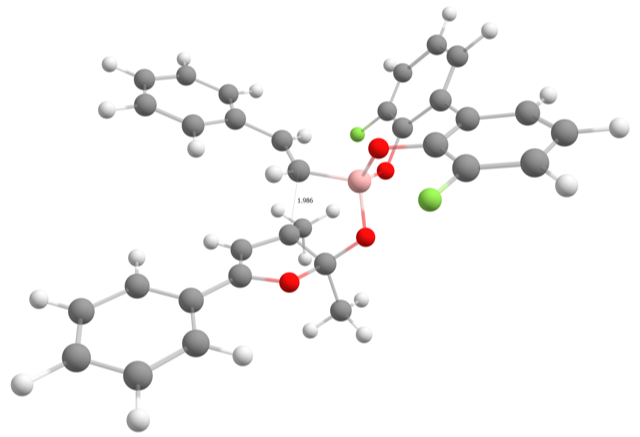
Credit: Jeremy May
A One-pot Recipe for Cyclic Ketones
Ketones are one of the most interesting and versatile organic chemical species. They are responsible for many of the distinct smells and tastes we experience, especially those that we associate with fruit and other natural flavours. However, they have even more fascinating chemistries, being useful across a wide range of organic synthesis routes, particularly when it comes to drug development and synthesis of natural products. This is especially true of special, cyclic ketones, where the characteristic carbonyl group (formed from a carbon and oxygen atom linked with a double bond) is part of a larger ring of carbon atoms. These cyclic ketones are notoriously difficult to synthesise when trying to incorporate specific other chemical groups in the ring in a position far away from the ketone motif.
Professor May and his team have been investigating a way to synthesise such substituted cyclic ketones from appropriate starting molecules. The idea here is to begin with a simple acyclic molecule which contains part of the desired final structure, and then conduct a series of substitutions to reach a desired end result. The goal was then to reduce the number of steps required and produce the most straightforward method, which would result in the desired product in the largest quantities and highest efficiencies.
They began by testing a number of different catalysts for their ability to add new functional groups to their starting materials. Once they had found the best catalyst, they then tested a number of reagents and recorded the final cyclic products they would produce, and in what quantities. Once they had a better idea of how these conditions would affect the reaction, they managed to design a one-pot synthesis which could take them directly from their starting material to the desired cyclic ketone product in a single reaction.
This approach showed not only how the team was able to simplify and improve the overall method of synthesis, but also demonstrated how, through intelligent planning and thorough consideration, they were able to control the parameters of the reaction and produce highly useful final results. These results will likely lead to further improvements in planning this sort of synthesis, and thus, drive forward meaningful developments in organic and synthetic chemistry.
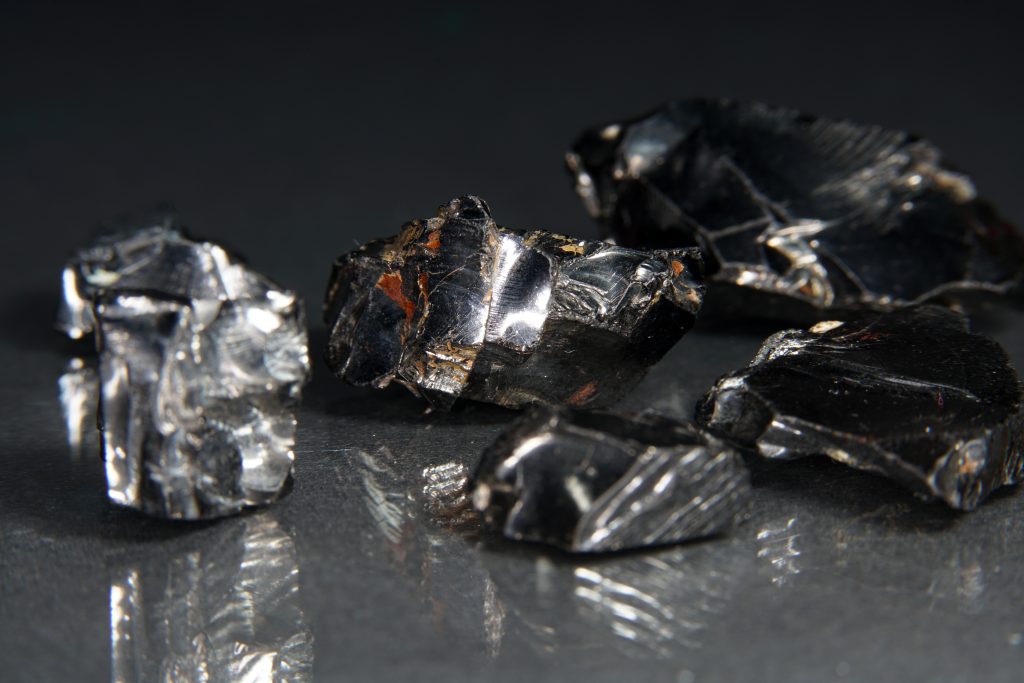
Elemental Gallium.
A Suitable Catalyst for Polyene Synthesis
Polyenes, a chemical group containing multiple carbon-carbon double bonds, are very important to synthetic chemistry. The double bonds can react and attach to different chemical species, meaning that polyenes are excellent starting points when synthesising new compounds. Once again, this makes them a very important group across countless industries and areas of research, where the ultimate goal is to design and produce new molecules of interest from scratch. Therefore, the ability to create new polyenes with specific groups attached to them remains a challenge of modern chemistry.
Previously, this has been performed with a variety of transition metal-based catalysts with varying results. Unfortunately, these often require harsh reaction conditions and can lead to heavy metal toxicity and environmental issues, which make them unsuitable for large-scale use. In a recent study, Professor May investigated how this process can be improved to make it more approachable and reduce its environmental impact.
The goal here was to find a suitable, less harmful catalyst which could still enhance the reaction. The team went about testing a number of catalysts and, importantly, found that TetraBromoBiphenol, also known as TBBol, an organic compound containing carbon rings and bromine atoms, performed exceptionally well. They found that this catalyst was able to produce the same end result as the metallic counterparts – without the additional risks. Furthermore, they found that the reaction was more tolerant of certain chemical groups, which comparable methods were not. This represents a new and exciting methodology that, in the future, will allow scientists to use these building blocks to create more varied products.
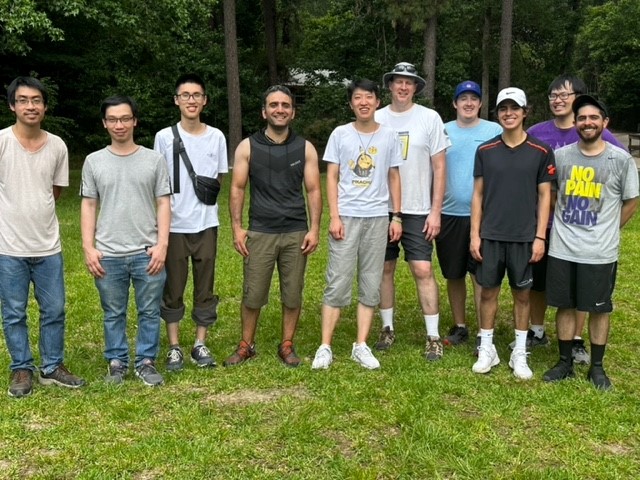
The May Lab. Credit. Jeremy May
However, this is far from where Professor May and his team’s research ends. In more recent studies, they have been looking into how they can use specific catalysts to control the symmetry of the products they produce. This can have a massive impact on their applications, especially when it comes to medicine and biochemical research.
This is an incredibly exciting development. Every time a new compound is produced, or a new method is created, this information can be stored for future use. This means that when it comes to future research and development, scientists won’t have to start from scratch, and can instead look to compounds and methods which have been recorded. By creating new methods and generally improving the knowledge of carbon-carbon bond formation, Professor May and his team have helped to provide insights with the potential to fuel endless discoveries and developments in the scientific world.
SHARE
DOWNLOAD E-BOOK
REFERENCE
https://doi.org/10.33548/SCIENTIA931
MEET THE RESEARCHER

Professor Jeremy May
Department of Chemistry
University of Houston
Houston, TX
USA
Professor Jeremy May began his scientific career at the University of Utah, where he earned his BSc in chemistry. He then moved to the California Institute of Technology where he worked on his PhD. After being awarded his doctorate, he became a National Institutes of Health Ruth L. Kirschstein postdoctoral research fellow at the Memorial Sloan Kettering Cancer Center. In the time since, he has been a key member of the faculty at the University of Houston, where he holds his current position. Here, his research focuses on a variety of topics within the broad theme of organic and organometallic chemistry and covers everything from natural synthesis to medicinal chemistry and catalysis. Professor May is a member of several scientific societies and has received numerous awards and honours, including the teaching excellence award for his work at the University of Houston, and an NSF CAREER award from the National Science Foundation.
CONTACT
E: jmay@uh.edu
W: https://www.uh.edu/nsm/chemistry/people/profiles/jeremy-may/
T: @maylabuh
FUNDING
National Science Foundation, USA
The Welch Foundation, Texas, USA
FURTHER READING
CP Donald, A Boylan, TN Nguyen, et al., Quaternary and Tertiary Carbon Centers Synthesized via Gallium-Catalyzed Direct Substitution of Unfunctionalized Propargylic Alcohols with Boronic Acids, Organic Letters, 2022, 24(37), 6767–6771. DOI: https://doi.org/10.1021/acs.orglett.2c02612
S Sundstrom, TS Nguyen, JA May, Relay Catalysis to Synthesize β-Substituted Enones: Organocatalytic Substitution of Vinylogous Esters and Amides with Organoboronates, Organic Letters, 2020, 22(4), 1355–1359. DOI: https://doi.org/10.1021/acs.orglett.9b04584
TN Nguyen, K Setthakarn, JA May, Oxyallyl Cation Capture via Electrophilic Deborylation of Organoboronates: Access to α,α′-Substituted Cyclic Ketones, Organic Letters, 2019, 21(19), 7837–7840. DOI: https://doi.org/10.1021/acs.orglett.9b02831
TN Nguyen, JA May, Tertiary and Quaternary Carbon Formation via Gallium-Catalyzed Nucleophilic Addition of Organoboronates to Cyclopropanes, Organic Letters, 2018, 20(1), 112–115. DOI: https://doi.org/10.1021/acs.orglett.7b03349


REPUBLISH OUR ARTICLES
We encourage all formats of sharing and republishing of our articles. Whether you want to host on your website, publication or blog, we welcome this. Find out more
Creative Commons Licence (CC BY 4.0)
This work is licensed under a Creative Commons Attribution 4.0 International License. 
What does this mean?
Share: You can copy and redistribute the material in any medium or format
Adapt: You can change, and build upon the material for any purpose, even commercially.
Credit: You must give appropriate credit, provide a link to the license, and indicate if changes were made.
SUBSCRIBE NOW
Follow Us
MORE ARTICLES YOU MAY LIKE
Dr Olalla Castro-Alvaredo | Measuring Entanglement: Symmetry-Resolved Entropy
Dr Olalla Castro-Alvaredo of the City University of London (UK) and her collaborators are advancing our understanding of an important phenomenon of quantum mechanical systems known as entanglement and, especially, its mathematical measures. Symmetry-resolved entanglement entropy is one such measure. Their study focuses on special quantum states which are excited with respect to a ground state. The research shows how the entanglement amongst quantum particles can be measured and assesses the contribution to the entanglement of quasiparticle excitations, particularly in the presence of additional symmetries.
Dr Tsun-Kong Sham – Dr Jiatang Chen – Dr Zou Finfrock – Dr Zhiqiang Wang | X-Rays Shine Light on Fuel Cell Catalysts
Understanding the electronic behaviour of fuel cell catalysts can be difficult using standard experimental techniques, although this knowledge is critical to their fine-tuning and optimisation. Dr Jiatang Chen at the University of Western Ontario works with colleagues to use the cutting-edge valence-to-core X-ray emission spectroscopy method to determine the precise electronic effects of altering the amounts of platinum and nickel in platinum-nickel catalysts used in fuel cells. Their research demonstrates the potential application of this technique to analysing battery materials, catalysts, and even cancer drug molecules.
Dr Marcus Noack and Dr Mark Risser | Advancing Gaussian Processes: The Noack-Risser Method
Dr Marcus Noack and Dr Mark Risser, researchers at Lawrence Berkeley National Laboratory, have recently proposed a significant advancement in the area of machine learning and data science that promises significant computational improvements: the enhancement of exact Gaussian Processes for large datasets, significantly improving data analysis capabilities for samples even beyond 5 million data points.
Dr Gregory Duane | Predicting Climate Change with Supermodels
Our universe is comprised of fascinatingly complex systems. Systems such as the Earth’s climate can, at first glance, seem far too complex and chaotic to predict accurately. Dr Gregory Duane and his team at the University of Colorado have been developing complex computational models that can learn from past data, providing us with intriguing insights and more accurate predictions about the future.

